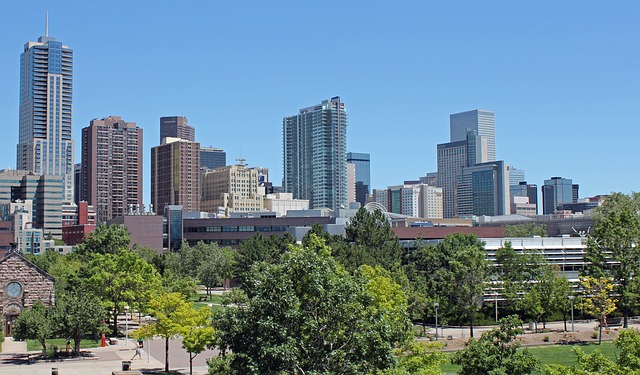
The city of Denver is the capital of Colorado, and with a population of more than 663,000 people as of 2014, it is also the city with the highest population in the state. It’s also the “Mile High City,” since it sits near this altitude. In fact, one of the steps of the Capitol building sits at exactly 5,280 feet in elevation. Denver is located to the east of the Rocky Mountains and near the intersection of the South Platte River and Cherry Creek. As the state capital, its history is crucial when studying Colorado and its past. The city is home to many major landmarks, including Confluence Park, Denver Union Station, and the Denver Mint, which is a major producer of U.S. currency. As a city, Denver’s history goes back to November of 1858, making it more than 150 years old.
Denver, Colorado was founded in part as a result of a major boom in gold prospecting activity known as the Colorado Gold Rush. In 1858, three years before the territory of Colorado was founded and 18 years before the state of Colorado was officially admitted to the Union, Gen. William Larimer staked a claim near Cherry Creek and the South Platte River. The landmark known as Confluence Park was eventually established to commemorate the founding of Denver at this location. In a bid to gain political favor, Larimer named the area Denver City after James W. Denver, who was the governor of the Kansas Territory. It became the county seat for Arapahoe County in 1861 and remained so until the county and city of Denver came into existence in November of 1902. The city began as a mining town and was accompanied by other mining towns such as Auraria and St. Charles City. The city’s growth was helped by the arrival of 100,000 prospectors in the region and the selection of the city as a major destination point by Western Union. Denver’s water supply was provided by the South Platte River and Cherry Creek via a number of companies, which competed fiercely for the local market amid concerns about sanitation and safety until the municipal Denver Water utility company was founded in 1918 as a public-run organization.
A branch of the U.S. Mint first began operating in Denver in 1863 at 16th and Market streets, and operations eventually moved to the current Denver Mint. The Denver Mint was established in 1897 and went into operation in February of 1906. When Denver established a connection to the new transcontinental railroad in 1870, it began to grow explosively, attracting wealthy citizens and prodigious levels of investment. At the request of the Union Pacific Railroad company, plans were made for a central railroad station. This eventually became Union Station, which first went into operation in June of 1881. Union Station has gone through a number of renovations, the latest being finished in 2014.
The city stumbled in 1893 when silver prices collapsed in an event known as the Silver Crash or the Denver Depression, which was all a part of the nationwide Panic of 1893. This resulted in economic, racial, and social turmoil that persisted for almost a decade. World War I brought a variety of ore mines to Denver, including tungsten mining operations. In 1934, during the Great Depression, the Burlington Railroad established a world record with the speed of a trip from Denver to Chicago using its Zephyr train. The years just before World War II brought a significant rise in the presence of military installations, including Lowry Air Force Base in 1938 and the Denver Ordnance Plant in January of 1941.
The city also saw a number of airports come and go, including Denver Municipal Airport and Stapleton International Airport, which were ultimately replaced by Denver International Airport, which saw its first commuter flights in February of 1995. In 1976, Denver became the first city to be selected for the Winter Olympics and then reject the honor, citing infrastructure concerns. The city’s population was plagued with a traffic crisis that eventually led to the Transportation Expansion Project, or T-REX. This project involved the widening of the city’s interstate highways and the construction of a light rail network throughout the city. The project was completed in November of 2006, ahead of time and under budget.
Denver houses have also changed dramatically from the city’s inception to now. What used to be farmland has turned into huge suburban and urban communities. With suburbs like Highlands Ranch, Aurora, Lakewood and Glendale, Denver has a wide variety of homes and residents. Farming has taken a back seat to technology development, though some can still be found in the outskirts. Homeowners in Denver are also very conscientious about green living and eco-friendliness. With many homes — especially the newly developed — you will find solar panel installations.
For more historical information about Denver, please consult the following pages:
- Early Denver History
- History of Denver
- 1858: The First Store Opens in the Frontier Town of Denver, Colorado
- Native History: The Birth of Denver, From Boom to Bust to Boom
- Founding of the University of Denver
- History of Denver Water
- The Black Past: Denver’s Five Points
- Street Names a Road Map Through History
- History of Denver
- U.S. Department of the Treasury: Denver Mint
- Fun Facts About Denver
- History of the Capitol


Are You Familiar With This Topic? Share Your Experience.